Today we are time traveling to Texas to meet Joseph Kaspar, the Texas accordionist of Czech descent. In this interview which took place on August 9, 1987, Al Lowman sat down with Joseph Kaspar at the Folk Like Festival in Texas. Here is what we can learn from this unique and very special Czech musician.
L: What have you been doing here at the Festival this year?
K: I play the accordion. I’m an old accordion man. I play the original button type accordion. I have a very modern accordion that I had made in Italy. I entertain people that like that kind of music. They’re mostly, you might say, the Slavics. But you’d be surprised but everybody likes that type of music.
L: The accordion, of course, is an instrument that cuts over several ethnic groups. You spoke of a button accordion as opposed to keyboard accordion. Is that right?
K: Yes.
L: What, essentially, is the difference between the two other than one’s got buttons and the other’s got keys? Is there any other difference?
K: There is a great difference. The keyboard accordion is a highly improved instrument. I’ve got an accordion with three rows of buttons. And I can only play in the key of F , B, and E, or I must arrange it for G/ C, or F, whatever. If I would play with an orchestra that plays in all keys, I must have three accordions at least. And I don’t have all the basses that they have because I don’t have the sharps and flats they do. It is an old-fashioned type of an instrument. There’s just as much difference between my accordion and the keyboard accordion that Mr. Kadlecek played a while ago as there is between the original pump organ and these modern organs that we have now.
L: O.K .
K: That is basically the difference.
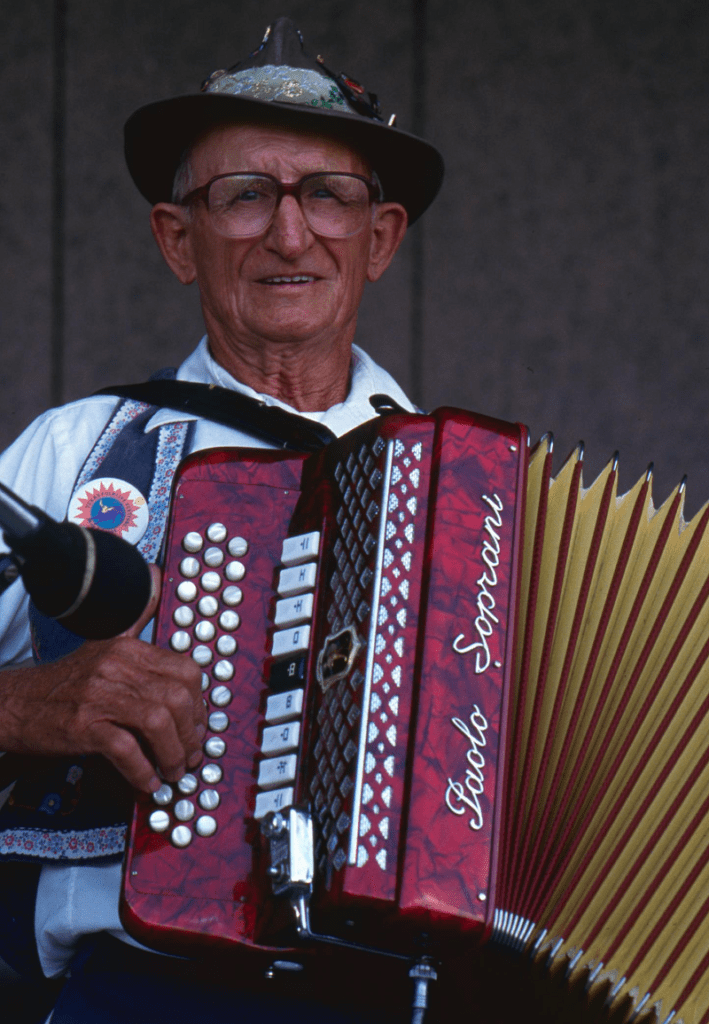
L: You spoke of having had this made for you in Italy?
K: Yes.
L: How many people do you know that can play the button accordion?
K: Right now I know of least ten of ’em. Not all of them are very good, but they play good, happy music. The accordion accompanies the singers, usually. I know some very good accordion players . The price of these accordions is out of reach for a lot of people. The real good accordions, anyway.
L: Now you mean the keyboard or button accordion?
K: The button accordions. So are the keyboard. But most of the artists with the keyboard are playing professionally, and they get a return on their instrument.
L: Do any button accordionists play professionally?
K: Yes. There are orchestras around Dallas, Texas. I know of two of ’em . And they are occupied perhaps twice a week. They make pretty good money, you might say .
L: Is there any tonal difference between a button accordion and a keyboard accordion?
K: Tone difference?
L: Yeah, tonal difference.
K: I would say that if there is it’s because it is tuned in that respect. The accordion could be tuned a little different from the rest. Would be probably the only one. I mean only way.
L: Let’s say we’ve got a quality keyboard accordion. Let me ask you this question. Why would anybody choose, then, to play a button accordion if they could play, let’s say, a top quality keyboard accordion? What is it that appeals to you about a button accordion over a keyboard accordion?
K: Well, let me say to start with , why I chose it. I never had the opportunity to learn music. I can’t read a note of music. When I was a little boy, my daddy would give me a little money for spending, and I would buy me a harmonica. And it is the same principle there … you have a push and a pull as opposed to the keyboard. No matter whether you push or pull the tone is the same. I learned to play the harmonica when I was a little boy, and as soon as I had a few dollars … you have to remember I’m a depression-raised boy .. . well, I think we bought our first accordion for less than five dollars. And that’s what I learned to play – – a one-row Hohner accordion made in Germany .
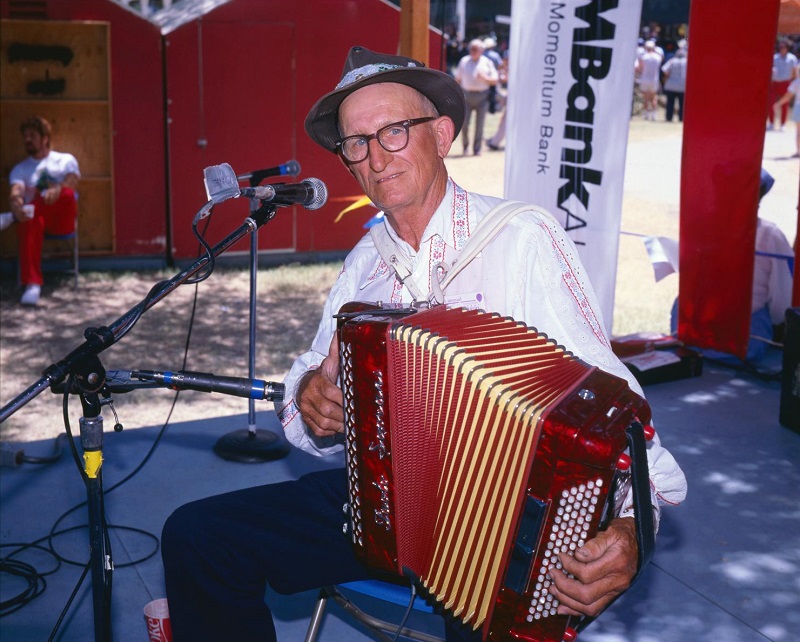
L : What kind?
K: It had only one row of keys.
L: Oh, one row of keys.
K: Made by the Hohner Company. They make fine instruments. As I grew older, I progressed to a larger type of an instrument. At that time the piano keyboard accordion was not very common. And they were quite expensive. And by the time I was, let’s say, 21 years old and getting to where I was pretty darn good, the war took me away, and I stayed away from the accordion for the next 30, maybe 35 years. I didn’t really restart playing an accordion until I was in my, well up until I was about 55 years old. And the only reason I got into it then was because I had a bad case of arthritis, and they say the movement of your hands and fingers will keep ’em limbered up. Therefore, my wife bought me an accordion, and I got into it and of course, everybody urged me on, and the next thing you know I owned a $2,000 instrument. Some friends introduce d me to some Italians that manufactured it for me. My accordion and my foreign accordion’s quality of the sound and the tone is the same because he and I would get together at the Wurstfest sometimes. So, therefore, I am limited to the key that I can play. Here’s one to A flat, and I’m lost, I can’t find it. I can only play in the keys the accordion was made in.
L: You said a while ago you could play in three different keys. How do you select the key? Is there some kind of an adjustment on the instrument?
K: No. The first row i s an F; the middle row is a B; and the third is an E.
L: O.K.
K: And I can make my chords out–play all three at the same time to make my chords. But, it is a different fingering when you’re playing three different … like any other accordions . The piano accordion. Then you have the chromatic … there are five basic types of accordions. The chromatic accordion; the keyboard accordion ; the button accordion, that I play; and there is a club accordion that I haven’t seen very much of around here … but they play them in Germany and the Swiss country. And then there is still another accordion type of accordion. They’re put together different.
L: Tell me about the chromatic . .. the chromatic, the club, and what was the other one?
K: Button and keyboard.
L: But chromatic, club, what was the fifth one?
K: I forget what it was, but there is still one more .
L : O. K. Tell me a little bit a bout how they differ. What’s difference?
K: Well, when you learn to play the chromatic accordion…
L : I know what a chromatic scale is.
K: Usually it’s in three, or perhaps five rows of buttons. It resembles mine. In fact, people think that I am playing a chromatic accordion. You have to know music. And you can play anything that there is, that can be played on a piano keyboard, or anything that can be played on a violin can be played on a chromatic because it’s all there. It’s just a matter of learning . Now the club accordion comes in, let’s say, three keys like G, C, and F. There’s an extra button in there to every time you want to hit a certain chord or change, you apply a pressure to that one button there in the center. You’re selecting your different chords with it, see?
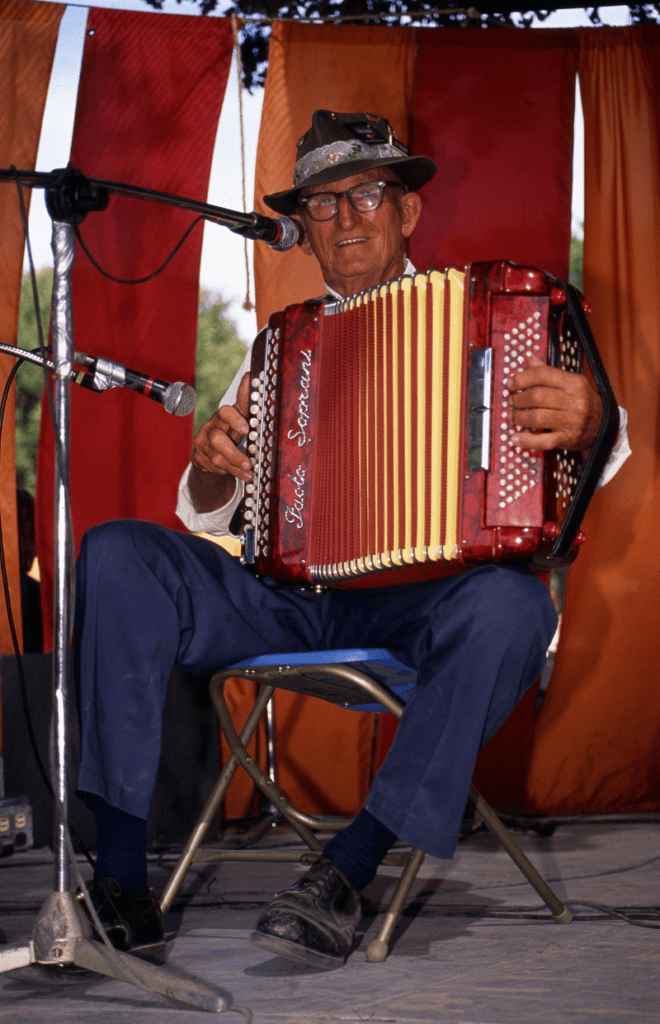
L: You mean different chords in a different key?
K: Yes. That is an accordion I don’t know how to play, neither. There’s that much difference in it. I was shown how it could be played, and they tried to sell me one. I did not want to change because it’s just one more instrument that you have to learn .
L: Next question. Where did you grow up?
K: I grew up in Taylor, Texas, Williamson County.
L: You started playing the accordion at what age?
K: I started playing the accordion, with the accordion you might say, when I was perhaps nine or ten years old .
L: What kind of household did you grow up in? Were there other people in the family that were playing musical instruments?
K: My oldest brother played a violin; he’s not living any more. My next brother played a guitar. There were six of us brothers. The next four of us all played the accordion at that time, when we were growing up. My sisters didn’t play any instruments. My daddy played the accordion a little bit. And my grandfather, Joseph Kasper, he was a very highly accomplished musician in Czechoslovakia. He had his own band even after they settled here in the United States back about 1884 or something like that.
L: Where did they settle?
K: Taylor, Texas, And so that kind of stayed in the family. In fact, quite a few of the Kaspers started out to play music–same as right now, children will fall away from music unless they are encouraged.
L: To keep it up.
K: Yeah. I have two sons and a daughter that play music, and they’ve practically given it up because there’s not much call. We have too much other type of entertainment. My youngest son was very good. He is now in the Air Force, and I hope when he returns that he picks up the instruments. He plays various types of instruments. He does not play the accordion, though.
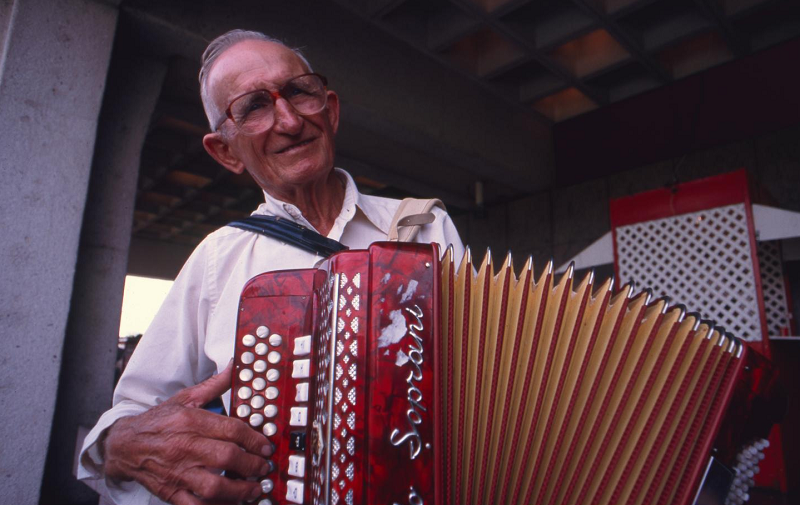
L: When you were growing up, did your family play together just privately, in your own home or were there occasions when you could go out and give a concert, not a concert maybe, but to play in public. Did your family play in just private or did they go out and play in public?
K: When we came home from the fields, usually after we ate supper … in those days we didn’t have air conditioning. Everybody was out there on the front porch–called them galleries, you know.
L: Oh yes . I remember.
K: Next thing you know, the accordion and the violin and the guitar went to work . That’s how we spent many evenings. And if there was anybody in the neighborhood that was getting married ,this type of music was provided. They had wedding dances. Anyone having a birthday, especially the older folks, they were always celebrating a birthday party. And there was a lot of singing and a lot of music; there were dances as they called ’em in them days. They’d have house dances. They’d take t he beds out of the biggest room or whatever occupied that room–everything went outside if the weather was nice. And they danced. And that’s the type of music we had. There was a lot of brotherly love then. I think we don’t see…
L: Were you living right in Taylor or were you living out in the country?
K: I lived in the country; I was living on a farm about four miles.
L: How close was your nearest neighbor?
K: Oh, I had neighbors anywhere from a quarter to a half a mile I could go in any direction.
L: If you sat on the front porch playing music, you weren’t disturbing anybody.
K: Oh no . They were sitting on their front porch or back porch, listening. We had neighbors that did the same thing. We might listen to t hem for a while and then we’d cut in and they’d listen to us, I guess.
L: O.K. What is the nature of your performing now? How has it changed? The performing you used to do when you were a kid as compared with the kind of performing you do now? The kind of setting that you performed in when you were growing up–the kind of setting you perform in now. Had the musical taste changed within the Czech community itself?
K: No, it has not changed. We are still playing the same songs that my grandfather and grandmother learned from their grandparents in Czechoslovakia or Germany or different … you know. So we are playing many of those songs yet. The only difference I would say is that we have electronics. I have an amplifier that I didn’t have then. I speak into a microphone. The instruments have been improved. I think they have a better sound than they used to. You can accomplish more on ’em. You know, anything you can improve. For instance, the buttons. My stubby fingers could not work as well on the old type timers. It looked like a bunch of buttons on these pegs of wood. Now it’s a nice smooth–like a pebble that I can run my hands over. Another thing–the setting might be different because right now I perform in front of, you might say … like yesterday, I performed in the afternoon. There might have been 10,000 people passed by. In the old days it would be maybe, just at the most 2,000 . So that
would be that much different.
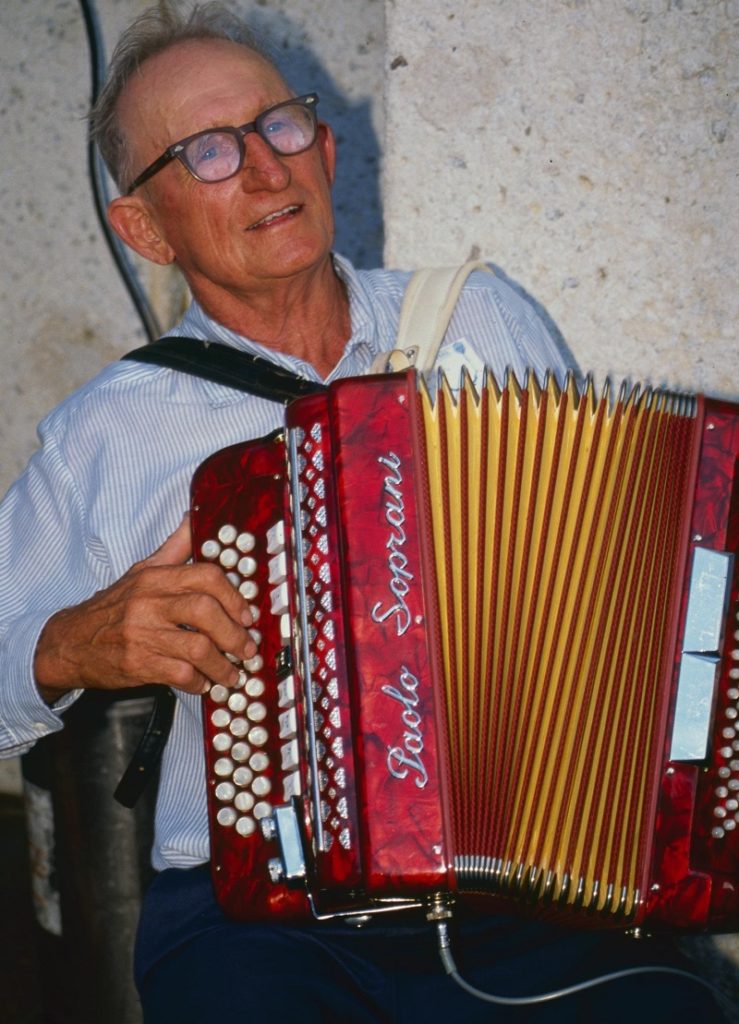
L: Are you a member of a group now that plays together–gives public performances?
K: No, I’m not a member of a group anymore. I used to have a group. I used to have my son. I had a drummer and then I had another son that played–Tovar. He could play the baritone, the trumpet. He was very good. And then I had a piano player, a guitar player. I was living in Corpus Christi at that time; I lived there for 25 years, and I used to play all summer long, but I did not get introduced into this area until three years ago. I was invited by, I think, was Miss Jo Ann asked if they knew someone that would like to come and perform in the Czech community. You see, the Czechs were not really represented very much. They still are not . We have a stage there now, but I didn’t think we had one until last year.
L: That I don’t know .
K: Therefore, that’s how I got into this. And I enjoy coming here.
L: When you perform over there on Stage 3– I did not see your performance here; I was a little late getting here. Were you up there on the stage by yourself?
K: Yes. Always by myself.
L : Playing the accordion?
K: Uh huh .
L: Do you ever sing along with your playing?
K: Yes, I do. And I have played at the Wurstfest three or four times .
L : I heard you mention that a while ago .
K: I seem to be the only person that’s alone. Sometimes that is a disadvantage, you know. When I played today, I played at one o’clock. Another thing that is against you is at that time the crowd is still small. There’s very few people around to listen.
L: That’s right.
K: I don’t get nervous very easy, but you begin to have the feeling like you’re not cared for; it does bother me. The more people, the better I like it. Because then, well, I guess I’m just a ham .. . but i t makes you feel better when there’s more people.
L: When you put that kind of effort into it, you want more people showing up. Absolutely.
K: When it opened up today at noon, there wasn’t half a dozen people there.
L: If you want to beat the crowd during Folklife Festival, you come early in the afternoon– too damn hot to do anything else.
K: Somebody has to start.
L: Somebody has to start. You spoke of living in Corpus Christi for a number of years.
K: Twenty-five years.
L: When did you move down there?
K: I moved to Corpus Christi in 1955. I left in 1980.
L: What did you do down there?
K: I’ve been a mechanic and a farmer all my life, and I moved down there to work for the Navy. I was asked to come, work for the Navy, because they knew of my professional training I had from the Air Force during World War II. I worked for the Navy for about 2 years, and then the place shut down. And then the Army opened up their repair shops in 1961, I think, and I was asked to go and work for them. I worked for ’em until 1980. I was a jet engine mechanic and a gas turbine mechanic. With my past experience, I was able to train a lot of men–young and old, both, because I was experienced in using precision instruments equipment. They even had sent me to Vietnam as a civilian to evaluate some work that had to be done there. So, I guess that I repaid the government for the training they gave me during World War II.
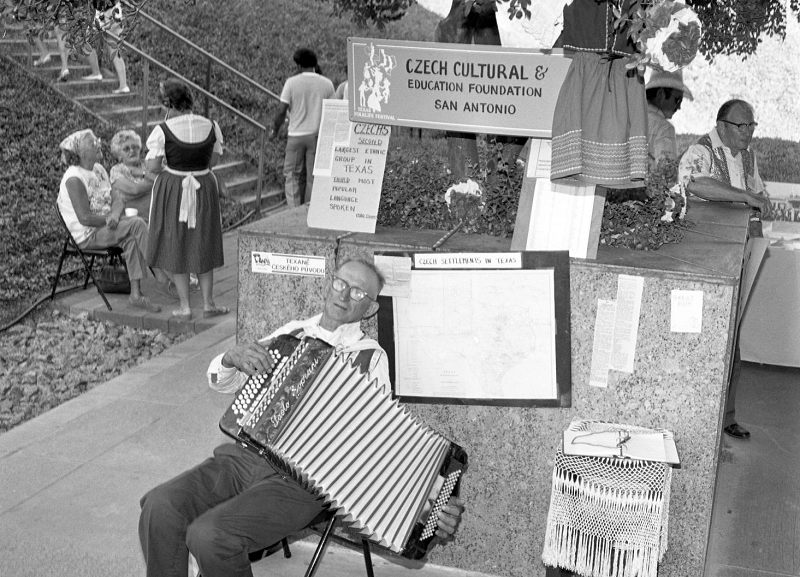
L: But you did it without keeping up your musical performing while you were in … those years you were down in Nueces County.
K: I started playing music approximately 1968, I got my next accordion in ’69.
L: And how long was it before you started public performing again?
K: Almost immediately , because that’s something you don’t forget. Once you learn how to play an instrument, if you’re not disabled by your hands or your wind or mouth or whatever. I think you never really forget it. I have to play by ear because I can’t read, you see. They ask me what key you’re going to play. I say I don’t know, but I think it’s in L. They say there’s no key of L. I says, “Well, everybody says it sound like it!” (laughter)
L: Your first year a t the Folklife Festival was when?
K: This is the third year. That would be in ’84, ’85?
L: Yeah, ’85. Well, that was about the first year that I attended my first Folklife Festival, because though I’ve worked in this place for 20 years, whenever Folklife Festival would come around, I managed to be on military duty and saw another part of the country. Unfortunately, my excuses finally ran out; I got run out of the Army Reserve, so I didn’t have a place to go. I have to show up here at the Folklife Festival every year.
K: Are you an Army retiree?
L: I spent my career in the Reserve. Come December the 8th, I will have spent 31 years in the Army Reserve. Then I am out. I’ve had all can stand. I am not asking you to give a commercial plug here–not at all. We aren’t going to play these tapes for our own amusement. You’ve been at three Folklife Festivals so far. What was your impression of it when you first showed up around here and what’s your impression of it now? Can you kind of reflect how you felt about it three years ago and how you feel about it this year?
K: Well, to start with, I’ve heard of this Festival, and I saw it on TV. And it seems like I never could make it, because that is the time of the year that we have, you might say, we are busy on the farm. Just like right now we have all the grain being combined, etc. I am a little farmer, but still I am … so, I finally made it, and I was asked to perform and that had made it twice as good. When I came here the first time I was amazed at what we have here. And how little people are aware of it. I was not aware of what went on. You can spend a day here and not really get to see it all–not get to really enjoy all of it, because you want to spend so much time in these different booths and attractions. And I loved it, and I think it’s great. I can’t see that I have seen any change. I heard that the attendance was down but I think that was last year it was very hot. Also, you see I stay at La Quinta, at that time those streets were under construction and people we re having a hard time getting around here. For instance, this year I thought that Bowie Boulevard was a one-way street, because I never drove down there–didn’t dare turn into it. Therefore, I turned around twice before I found out where I am supposed to register. I think some of it is improving. I have distributed literature about it in Waco and around those little towns where I live. And so many people will ask me, “Well, what is the Folklife Festival about?” I am convinced if more people were aware of the , of what they could see if they attended, more of ‘ern would come here . It doesn’t have enough publicity. Another thing I’ve found, we are getting into the last, I would say 15 years, there are so many more festivals that are being put on by local people, like the one in West, that is run almost like a hometown at present .
L: When I go to West , I never fail to stop at the village bakery .
K: And we have a big one on Labor Day. So a lot of our people have the local festivals. And east Texas is another one. Rosenberg, Houston. You used to not hear about these. In fact, one of the big ones, first ones I heard about is the Wurstfest in New Braunfels. There would be a little plug on this. I used to watch these on television. Even when I was in Corpus Christi they would start saying now here is what they are having in San Antonio today, etc . , and all of this. But it didn’t ever dawn on me that it was that great; didn’t hear enough of it. You See a 15- second plug, may be a 10-second plug .
L: Well, sir, that is about the end of my questions. I want to thank you for coming up here and visiting with us.
K: I’ll be over there until almost closing time–in the Czech booth. I was there yesterday. Same thing last year, for two days. I meet hundreds of people.
L: So you’re kind of hooked on it, eh?
K: Yes, I am. (laughter)
Original Interview Information
- Title: Interview with Joe Kasper, 1987
- Interviewee: Kasper, Joe
- Interviewer: Lowman, Al
- Date-Original: 1987-08-09
- Collection: Institute of Texan Cultures Oral History Collection, University of Texas at San Antonio
Have you ever seen a Heligonka? It’s an accordian-ish type instrument as well. If this interests you, you’ll certainly enjoy reading The Czech and Slovak Heligonka Instrument.
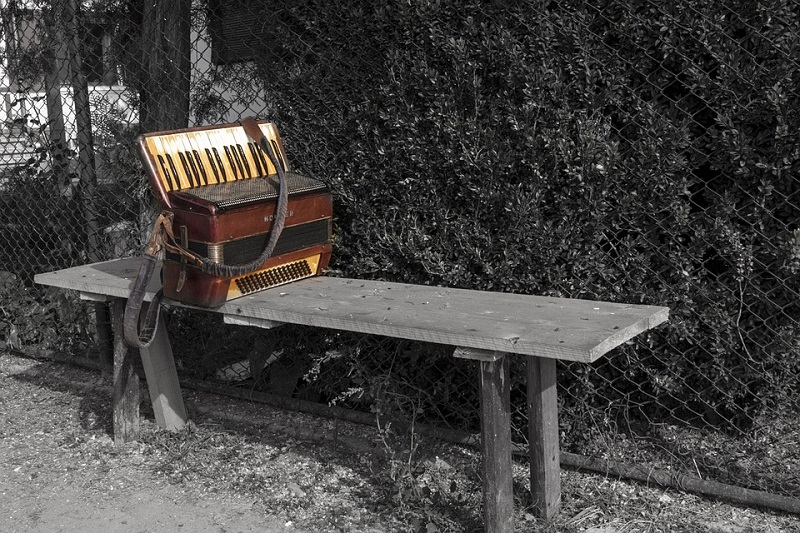
We hope this post inspires you to keep our musical heritage alive by encouraging youngsters to experiment with these instruments and learning about their importance in history. Polka music has a special place in my heart because it was my ancestor who wrote the first ever printed polka. You can read about that here: František Hilmar, Father of the Polka.
* * * * *
Thank you in advance for your support…
You could spend hours, days, weeks, and months finding some of this information. On this website, we curate the best of what we find for you and place it easily and conveniently into one place. Please take a moment today to recognize our efforts and make a donation towards the operational costs of this site – your support keeps the site alive and keeps us searching for the best of our heritage to bring to you.
Remember, we rely solely on your donations to keep the project going.
We appreciate you more than you know!
If you have not already subscribed to get TresBohemes.com delivered to your inbox, please use the form below now so you never miss another post.




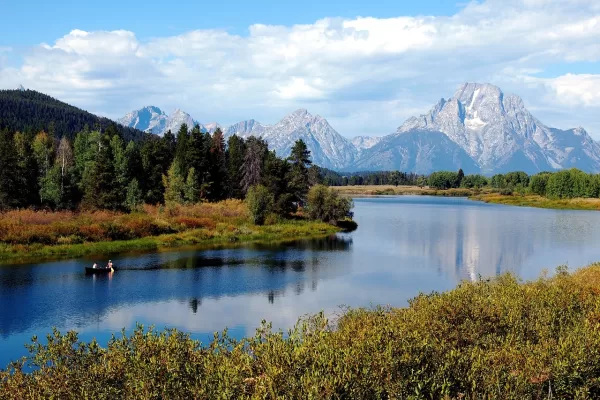
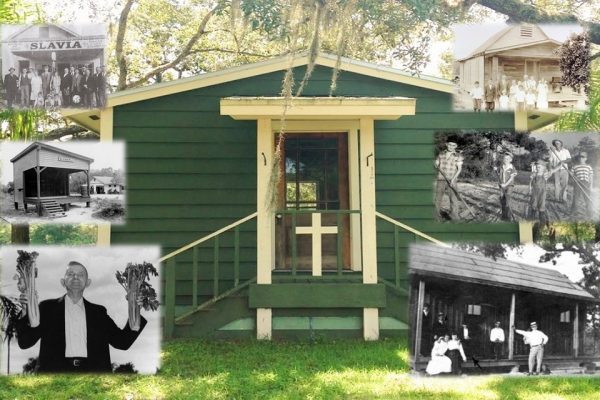
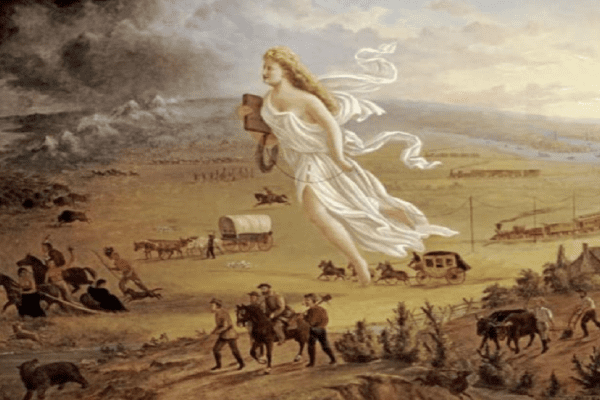















I had a chance to hear him play years ago. Those were the good old days.